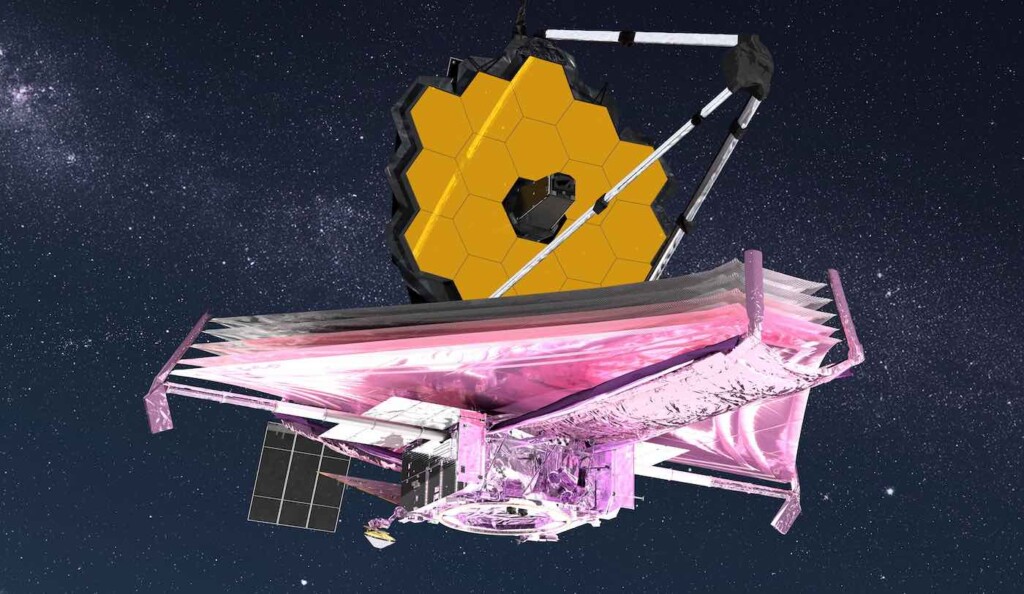For two years, an international team has been exploring what astronomers refer to as the Cosmic Dawn – the period in the first hundreds of millions of years after the Big Bang when the first galaxies were born.
Using NASA’s James Webb Space Telescope (JWST), they have now discovered two of the earliest and most distant galaxies yet confirmed.
Dating back just 300 million years after the Big Bang, these galaxies mark a major milestone in the study of the early universe, according to University of California-Santa Cruz astronomer Brant Robertson, who co-led the team working on the JADES (JWST Advanced Survey deep extragalactic).
“This discovery is completely unexpected and is likely to be seen as the most important extragalactic discovery with JWST to date,” said Robertson, a professor of astronomy and astrophysics who is part of the JADES steering committee. He is the lead author on the first of three papers reporting different aspects of the discovery.
In a paper, the authors concluded: “With the population of high-redshift galaxies now formed less than 300 million years after the Big Bang, we have extended our reach into the cosmic past by 40% over the first eighteen months of JWST operations.”
“Redshift” refers to an effect caused by the expansion of the universe, where the wavelength of light from distant galaxies is stretched as it travels. In these newly discovered galaxies, the effect is extreme — stretching by a factor of 15, and moving even the galaxies’ ultraviolet light into infrared wavelengths where only JWST has the ability to see it.
IS URANUS RINGED? See stunning new image of Uranus – showing its rings and moons clearer than ever (WATCH)
Chasing the early galaxies
Modern theory holds that galaxies develop in distinct regions where gravity has concentrated cosmic gas and dark matter into dense clumps known as “halos.” These haloes evolve rapidly in the early universe, coalescing into increasingly massive collections of matter. This rapid development is why astronomers are so eager to find earlier galaxies: Each small increment moves our eyes to a less developed period, where the brightest galaxies are even more distinct and unusual.
“This galaxy is truly a gem and shows more hidden treasures in the early universe,” Professor Robertson said.
Found in a region near Hubble’s Ultra Deep Field, the new galaxies, which have been confirmed spectroscopically, are now known as JADES-GS-z14-0 (the most distant) and JADES-GS-z14-1.

According to NASA, in addition to being the new distance record holder, JADES-GS-z14-0 is remarkable for how big and bright it is. JWST measures the galaxy over 1,600 light-years in diameter. Many of the brightest galaxies produce most of their light through gas collapsing into a supermassive black hole, producing a quasar. But the team says JADES-GS-z14-0’s large size means the light must be produced by young stars.
HOLY GRAIL: NASA just cracked the code on replacing lithium in batteries: ‘Double or even triple the energy’
Deeply hidden gems
And yet, the massive galaxy was a puzzle to the JADES team when they first saw it over a year ago, as it appears close enough in the sky to a foreground galaxy that they couldn’t be sure two were not neighbors. But in October 2023, the JADES team conducted even deeper imaging—five full days with the JWST Near-Infrared Camera on just one field—to form the JADES Origins Field. With the use of filters designed to better isolate early galaxies, confidence grew that JADES-GS-z14-0 was indeed very distant.
In addition, the galaxy fell into a region where the team had performed ultra-deep imaging with the JWST Mid-InfraRed Instrument. These combined imaging results convinced the team to include the galaxy in what was planned to be the flagship JADES survey, a 75-hour campaign to perform spectroscopy on faint early galaxies. The spectroscopy confirmed their hopes that JADES-GS-z14-0 was indeed a record galaxy—and that the fainter candidate, JADES-GS-z14-1, was almost as far away.
The combination of high luminosity and stellar origin makes JADES-GS-z14-0 the most distinct evidence yet for the rapid formation of large, massive galaxies in the early universe.
“We could have detected this galaxy even if it was 10 times fainter, which means we could see other examples even earlier in the universe – perhaps in the first 200 million years,” Robertson added.
Friendships: NASA visualizes what it would be like to sink into a black hole
Robertson’s paper of May 30, The earliest galaxies in the JADES field of origin: Luminosity function and cosmic star formation rate density 300 Myr after the Big Bangaccepted for publication in the Astrophysical Journal.
SHARE ASTRO NEWS with Space Geeks on social media…